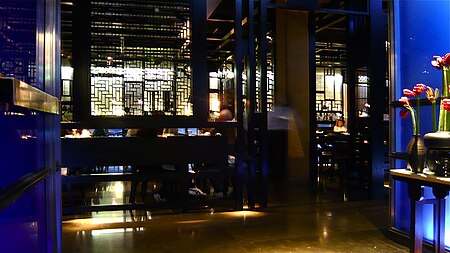Hakkasan
Buildings and structures in the City of WestminsterChinese community in the United KingdomChinese restaurantsMichelin Guide starred restaurants in the United KingdomRestaurants in London ... and 3 more
Restaurants in New York CityTourist attractions in the City of WestminsterUse British English from April 2011

Hakkasan is a Chinese restaurant first opened in Fitzrovia in London, England but has since expanded to many cities worldwide. The restaurant was founded in 2001 by Alan Yau, who was also behind the Wagamama Japanese restaurants and later the Yauatcha restaurant, also in London. It serves modern Chinese cuisine fused with Western upscale dining experience. The Hakkasan group has also branched into hospitality and entertainment including a nightclub opened in Las Vegas.
Excerpt from the Wikipedia article Hakkasan (License: CC BY-SA 3.0, Authors, Images).Hakkasan
Hanway Place, London Bloomsbury (London Borough of Camden)
Geographical coordinates (GPS) Address Phone number Website External links Nearby Places Show on map
Geographical coordinates (GPS)
| Latitude | Longitude |
|---|---|
| N 51.517194444444 ° | E -0.13175 ° |
Address
Hakkasan
Hanway Place 8
W1T 1HD London, Bloomsbury (London Borough of Camden)
England, United Kingdom
Open on Google Maps







